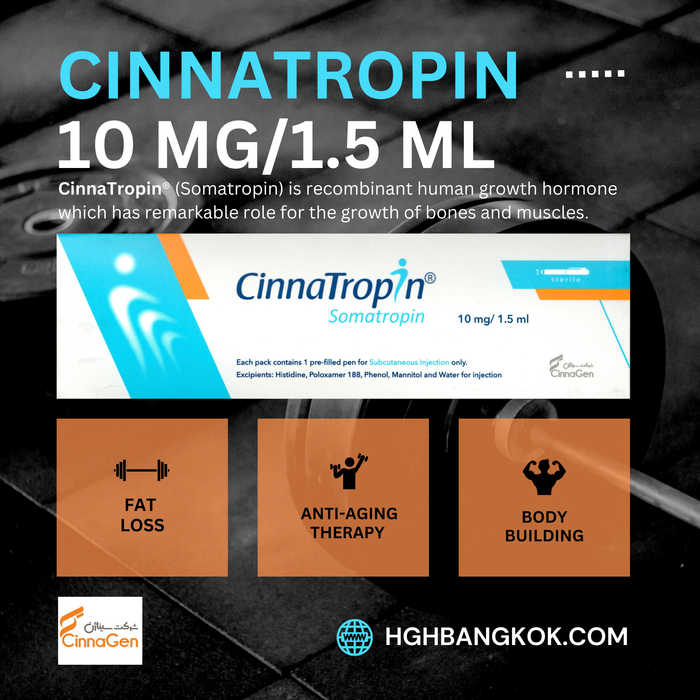
CinnaTropin 10 mg
CinnaTropin 10 mg is a high-quality recombinant human growth hormone (somatropin) developed by CinnaGen. It is designed to support healthy growth, recovery, and overall well-being, offering reliability and effectiveness at a competitive price point.
💉 Form: 10 mg (approx. 30 IU) vial – lyophilized powder for injection
🌍 Origin: CinnaGen – Produced under strict international pharmaceutical standards
🔒 Authenticity: 100% original, sealed, and pharmacy-grade
Key Benefits
✔ Stimulates muscle growth and lean body mass
✔ Accelerates recovery and tissue repair
✔ Enhances fat metabolism and energy balance
✔ Improves sleep quality and vitality
✔ Safe and effective with precise dosing
Why Choose CinnaTropin 10 mg?
-
Produced by CinnaGen, a trusted biopharmaceutical company
-
High purity and pharmaceutical-grade quality
-
Cost-effective alternative to other HGH brands
-
Secure shipping with optional HGH.Plus+ insurance
⚠️ Important Shipping Notice
Starting 1st July, all orders without “HGH.Plus+” insurance will not be eligible for a refund.
We strongly recommend adding this insurance to protect your purchase against loss, damage, or other issues during shipping.
With HGH.Plus+ insurance, you can enjoy peace of mind knowing your order is fully covered in international transit.

